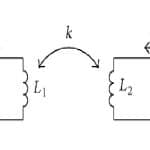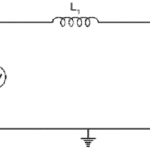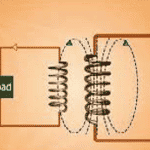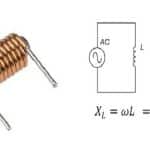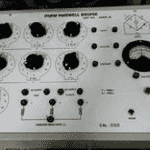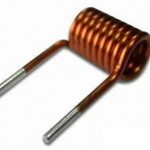For inductor-coupled circuits, the coefficient of coupling is a significant factor to decide the amount of coupling between the inductively coupled coils. These coils are coupled with the magnetic flux. If one inductor’s total magnetic flux is coupled with the other inductor then it is known as perfect coupling. In this situation, this coupling (K) is expressed as 1 which means 100% coupling. The mutual inductance mainly depends on the coefficient of … [Read more...]
What is RL Circuit : Impulse Response & Phasor Diagram,
We all know that the basic passive linear elements in the domain of electrical and electronics are capacitor, resistor, and inductor. These elements are integrated to form various types of electric circuits. The major circuit types are RC, RLC, LC, and RL where these combinations exhibit major kinds of performance which are essential to analog electronics. In specific, they hold the ability to perform as passive type filters. In a practical way, capacitors … [Read more...]
What is Mutual Inductance : Derivation & Its Applications
In the domain of electronics and electromagnetism, inductance is the crucial concept where it is the inclination of a conductor to contradict the current flow. The current flow generates a magnetic field across the conductor. The field strength is based on the current’s magnitude and goes as per current changes. The word inductance was coined by Oliver Heaviside in the year 1886. In the name of Heinrich Lenz, the symbol of inductance was provided. The … [Read more...]
What is Inductive Reactance : Derivation & Its Example
Once the equivalent values of DC & AC voltages are applied to the circuit which includes an inductor connected in series through the load. So the current supply in a DC circuit is more as compared to AC circuits due to the induced voltage that opposes the flow of current within the DC circuit once the flow of current reaches its highest value. When it approaches a fixed state value, then there is no more inductive effect. In AC circuits, the flow of … [Read more...]
What is Self Inductance : Theory, Examples & Applications
In the domain of electronics and electromagnetism industries, inductance is the movement of the electrical conductor to obstruct the flow of current. The current movement develops a magnetic field across the conductor and this field strength is based on the current magnitude and any current variations. From the principle of Faraday’s law of induction, any deviation in the magnetic field along the circuit generates an EMF voltage and this is termed as … [Read more...]
Different Types of Inductor and Its Applications
There are various types of inductors are available in the market based on its ratings and sizes and ratings. Their physical sizes differ from small sizes to the enormous transformer, based on the AC frequency being used and power being handled. An Inductor is one of the basic electrical components used in much wider application areas namely signal controlling, voltage stabilization, noise elimination, automobile operations, power electronic equipment, etc. … [Read more...]
